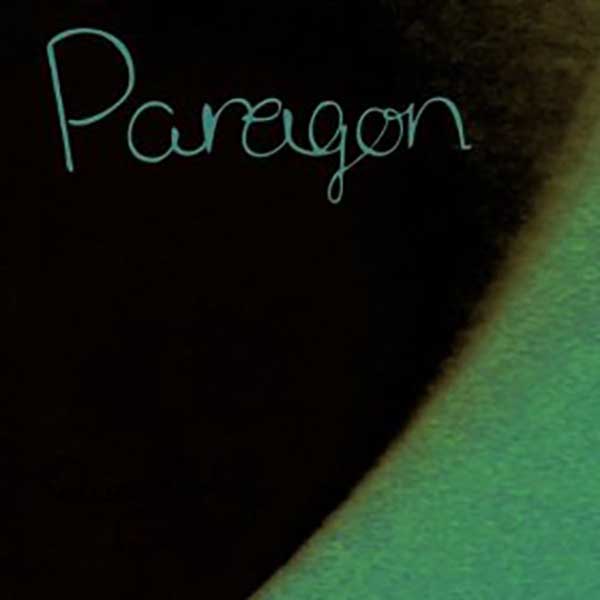
by Ian Mann
June 17, 2010
/ ALBUM
One of this year's most enchanting releases.
Paragon
“Quarterlife Crisis”
(Shakewell Records SH1CD)
This album was given to me for review purposes by the young drummer Jon Scott at a performance in Birmingham by the Kairos 4tet. Apart from his engagement with Kairos I have also seen the Manchester born drummer performing with pianists Will Butterworth and Ivo Neame. He’s clearly a rising star and a name to look out for. Reviews of all these shows can be found elsewhere on this site.
Scott also plays drums with Paragon, a young Anglo/German quartet led by Berlin based saxophonist Peter Ehwald. Ehwald shares the composing credits with British pianist Arthur Lea who has also worked with the Seb Pipe Experience. The group is completed by Cologne based bass player Matthias Akeo Nowak.
Ehwald has studied with former Loose Tubes saxophonist Julian Arguelles and there’s something of a post Tubes pastoral eccentricity about Ehwald’s playing and writing here that mirrors the music of his mentor Arguelles plus that of other former Tubes such as Mark Lockheart, Iain Ballamy and Django Bates. Lea also seems to be under Bates’ spell, he even plays the tenor horn although he doesn’t feature it here.
Ehwald’s myspace friends include Robert Landfermann, bassist with Berlin trumpeter Matthias Schriefl’s quartet. Schriefl has an impish sense of humour as witnessed at his show in Birmingham last year (reviewed elsewhere on this site) and Ehwald obviously shares some aspects of his compatriot’s whimsical streak. Even the quirky cover drawings on the packaging of “Quarterlife Crisis” give some idea of the charm of the music within.
Paragon’s music is more lyrical than Schriefl’s and shares certain characteristics with Scott’s other group Kairos 4tet. The drummer kicks off the album as he introduces Ehwald’s “Koln”, a paean to the city where he (Ehwald) attended university. Scott’s drumming throughout the album is full of colour and subtle detail. Here he is the perfect foil for the long melodic lines of Ehwald’s saxophone and Lea’s exploratory but lyrical piano.
Lea’s “Tiny Thompson” sees him switching to Fender Rhodes. The tune is catchy and quirky and has been compared stylistically to Sonny Rollins’ calypso flavoured pieces. For me Lea’s distinctive Rhodes sound owes something not only to Django Bates but also to Richard Fairhurst’s sound on the instrument with his group Hungry Ants. There’s maybe a hint of the “Canterbury” sound too. The net result is thoroughly charming and engaging, like so much of Paragon’s music.
The title track is more abstract than what has gone before combining moments of tumbling, boppish dissonance with more lyrical passages. Lea’s playing here has been compared with that of Andrew Hill and he proves to be an ideal foil for Ehwald’s thoughtful saxophone ruminations. Scott’s precise drumming adds just the right amount of colour and propulsion.
The brief ” The Beech Tree 1” proves to be an Ehwald piece for solo double bass superbly played by Nowak and this is followed by Lea’s “Sprechstimme”, a gloriously romantic tune that owes something in style to Keith Jarrett at his most bucolic.
Ehwald’s “Rock III” is hewn from altogether rougher material with the saxophonist soloing powerfully above a busy undertow of Rhodes, bass and drums. As elsewhere the piece is leavened by more lyrical moments with Nowak featuring on a highly effective and lyrical bass solo before the quartet return to the more full on approach. The title perhaps gives some idea of where the quartet are coming from here with electric era Miles Davis perhaps a source of inspiration.
Ehwald’s “Big Bird” adopts a more boppish tone and the title is possibly a nod in Parker’s direction even allowing for the cartoon big bird referenced three times on the cover. European lyricism, particularly from Lea sits well with Ehwald’s more overtly bop inspired playing. In jazz terms the piece is more conventionally structured than much of Paragon’s music and Scott enjoys a number of colourful and inventive breaks.
“Kangaroo”, also by Ehwald is vaguely Latin, vaguely Monkish with Ehwald at his most Arguelles like. Lea’s lyrical, almost rhapsodic solo contrasts well with Ehwald’s gently probing sax.
“The Beach Tree II” is a charming three minute miniature that shimmers atmospherically on the horizon.
Lea’s “Eva Lea”, a dedication to his new born niece is a gorgeous ballad. Lea may be the secondary partner in terms of composition here but his three pieces all show his innate ear for a good tune. There’s an appropriately celebratory air about the music here with early Jarrett again sounding like a source of inspiration. Engaging solos come from Lea and Ehwald to ensure that this charming album ends on a high note.
“Quarterlife Crisis” is one of this year’s most enchanting releases. It charms without being twee and Lea’s natural lyricism is the perfect foil for Ehwald’s more experimental, sometimes querulous saxophone sound. Nowak and Scott offer sympathetic support, the drummer’s understated but colourful performance suggesting that he’s perhaps been listening to such masters of the art as Paul Motian or Jon Christensen.
Paragon are due to tour the UK in the New Year. They should be well worth looking out for and I predict that this highly competent young group will win themselves a lot of new friends in much the same way as Kairos have done. Their music isn’t the easiest to describe but it’s frequently a joy to listen to.
blog comments powered by Disqus